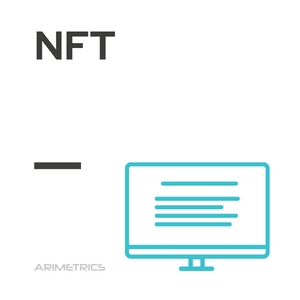
An NFT or non-fungible token is a special type of cryptographic token that represents something unique and therefore are not mutually exchangeable. This contrasts with cryptocurrencies and many network or utility tokens that are fungible by nature. The four main characteristics of NFTs are that they are exclusive, undivided, transmissible and with the ability to demonstrate their inadequacy.
Concept of expendable and non-expendable goods
In the legal and economic sphere, assets are classified into two main categories: fungible and non-fungible. This distinction is fundamental to understanding the value and nature of assets, especially in the digital context.
- Expendable goods: These are goods that can be exchanged for others of the same kind, quality and quantity. Their value is based on their number, measure or weight, and they are easily replaceable. Common examples include money, grain or oil, where each unit is identical to another of the same type.
- Non-fungible assets: These are assets that cannot be exchanged for others of equal value due to their unique characteristics. The value of these goods is intrinsic to their individual properties, such as works of art, real estate or collectibles. Each non-fungible good is unique and has no exact equivalent.
Operation of NFTs
Non-fungible tokens (NFTs) are an innovation in the digital world that allows the representation of unique assets in a virtual environment. They use blockchain technology to guarantee the authenticity and ownership of these assets.
- Blockchain technology: NFTs are managed through a blockchain, a decentralized network of computers that records transactions in blocks. These blocks are secured using cryptography, which ensures that the data cannot be altered once recorded. Each block is linked to the previous one, forming a chain that is resistant to modification.
- Immutable metadata: Each NFT is assigned a digital proof of validity, which includes metadata that cannot be altered. This metadata verifies the authenticity of the NFT, records its initial value, the transactions made, and the author’s name. This ensures that each NFT is unique and traceable over time.
Why do people buy NFTs?
NFTs have captured the interest of collectors, investors and technology enthusiasts for several reasons:
- Appreciation potential: Buyers expect the value of an NFT to increase over time. As unique assets, their theoretical scarcity could increase their future value, allowing for possible resale at a higher price.
- Exclusivity and digital ownership: NFTs offer buyers ownership of unique digital assets that cannot be replicated. This exclusivity is attractive to collectors and technology enthusiasts, providing a new way to own art and other digital assets.
- Innovation and support for creators: Buying NFTs can be a way to support digital artists and creators by providing a new avenue to monetize their work in a secure digital format. In addition, NFTs allow creators to receive royalties every time their work is resold.
Examples of NFT
NFTs are being used in a variety of sectors, demonstrating their versatility and potential for impact:
- Digital Art: Beeple’s “Everydays: The First 5000 Days” is a digital collage that sold for $69 million, marking a milestone in the sale of digital art via NFT.
- Digital collectibles: “CryptoPunk #7804” is one of 10,000 unique algorithmically generated characters that sold for $7.6 million. These characters are considered pioneers in the NFT space.
- Bored Ape YachtClub: This collection includes 10,000 unique ape illustrations, each with different features and styles. Owners of these NFTs gain access to exclusive events and a private community. A prime example is “Bored Ape #2087,” which sold for more than $2 million.
